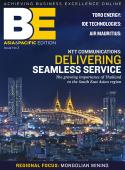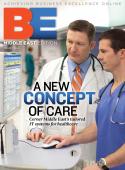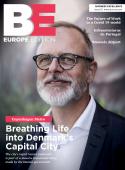Perfect persuasion┬áFor HCA, the largest for-profit healthcare company in the US, the process of designing new hospitals and upgrading older ones is an essential part of continually improving patient care and refining hospital practice. Bryan Seely explains to Gay Sutton why lean design lies at the heart of HCAÔÇÖs hospital efficiency. Managing the construction and upkeep of the properties in the HCA portfolio is a monumental feat of administrative and management ability. With 160 hospitals and over 110 outpatient centers in the US, not to mention five hospitals in London, HCA has a continuous program of construction, renovation and expansion. Keeping a finger on the pulse of healthcare, managing the design process and maintaining the commitment of all the people involved is very much the remit of the design director, Bryan Seely.ÔÇ£HCA has a bottom-up structure,ÔÇØ Seely explains. ÔÇ£Most, if not all, projects are driven by the facility: there may be a need for more beds, bigger emergency rooms, etc.ÔÇØ The facility managers submit a business case outlining the clinical requirement, the expected number of patients to be treated and the revenue that this could generate. At a corporate level, the business case is then validated by the planning department to ensure there is a genuine market need for the expansion, to define its overall capacity and usage, and to scope it out and attach a funding package. It is at this stage that the design team becomes involved. Armed with a definition of the project, architects are commissioned to flesh it out and draw detailed plans. ÔÇ£For example, if weÔÇÖre asked to build operating rooms, they will need space for preparation and aftercare,ÔÇØ he explains. HCA has considerable experience and knowledge to draw upon across the entire group, and its aim is to implement the latest clinical practices and create a standard of best practice that can be incorporated into new construction or renovation projects where appropriate. ÔÇ£One of the benefits of working for a Fortune 100 company is having a clinical services team focused on the clinical environment.ÔÇØ Each team member specializes in an individual clinical area such as pharmacy, surgery or emergency rooms, and their job is to keep up to date with the latest clinical developments and operational best practice. The clinical service teams examine the architectsÔÇÖ rough conceptual drawings and pass on suggestions and changes that would bring the new construction up to date with new ideas in hospital practice and in line with HCA clinical policy. ÔÇ£The architects will plan patient flow: how patients come into the hospital, where they wait, where they prepare, have their procedure, recover and then go home. But instead of continually articulating this flow to different design firms, what weÔÇÖve done is partner with several design firms that we use on every project.ÔÇØ In this way, the architects are continually gaining knowledge and experience that is used again and again on HCA projects, streamlining the design process.Seely then runs in-depth meetings with hospital user groups and department heads to review the plans, walk through patient flows and operational flows, and ensure that there is buy-in at the local hospital level for the plans. And this can be the most challenging task of all. ÔÇ£We sometimes find that because staff members spend so much time in the hospital, it becomes personal to them,ÔÇØ he explains. The art of his role then becomes one of educating the users in the latest concepts and practices, mediating and persuading. ÔÇ£ItÔÇÖs a continued dialogue,ÔÇØ he says. And it may come down to suggesting that they perhaps visit a similar department in a sister hospital to see exactly how the new practice operates and the benefits it delivers to both staff and patients. Once the review process is completed and final approval is given by corporate management, the construction phase is passed on to a construction manager who has been in position since the beginning of the project and has been working in partnership with the architects and design team to facilitate the most cost-effective construction decisions. ÔÇ£One of the key buzzwords at the moment is ÔÇÿlean design,ÔÇÖÔÇØ Seely says. In the hospital design context, that means shortening the design, review and approval cycle by bringing the right people together at an early stage, making informed decisions and understanding their ramifications throughout the project. ÔÇ£Our process may not be as rigid as a true lean process, but we feel weÔÇÖve been doing this for 30 years at HCA.ÔÇØ The final piece in the design puzzle takes place six months to a year after a new project is up and running. ÔÇ£WeÔÇÖll do a post-occupancy evaluationÔÇöwalk through a department and say, ÔÇÿHow is this working? How is that working? What could be done better?ÔÇÖ We can then go back and incorporate that learning. And working with the same teams enables us to do things better and better.ÔÇØHCA has two major projects of note currently under way. The first is a completely new 126-bed, five-story hospital in Spotsylvania, Virginia. New builds present a different type of challenge: that of obtaining user input. The process that works the best is for the design team to bring in staff from a variety of other HCA hospitals to discuss patient flows and other operational issues. Often, Seely finds the outcome is even better and can create a template that can be rolled out on future projects, because ÔÇ£in a new build we focus on the concepts and how departments work best, rather than on trying to address things that arenÔÇÖt working so well.ÔÇØThe second project is a new concept for HCA: how to design a completely new hospital to be much more outpatient-friendly. The solution is being tried out at an 87-bed hospital at Stone Oak in San Antonio, Texas, and employs a concourse. ÔÇ£ItÔÇÖs very similar to an airport terminal. It has a large consolidated waiting space with a full range of amenities and then portals into the different service lines. So you check in, and once you progress beyond the portals, youÔÇÖre separated. ItÔÇÖs a whole new concept.ÔÇØ Will it work? Only time will tell. But with the wealth of experience and knowledge that goes into the decision-making process, it stands a good chance of success. ÔÇô Editorial research by Vince Kielty┬á









